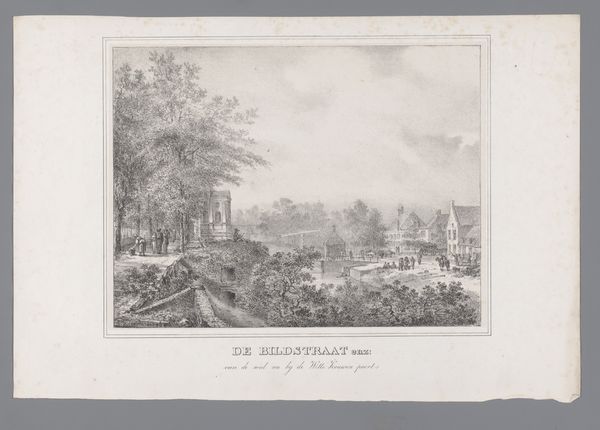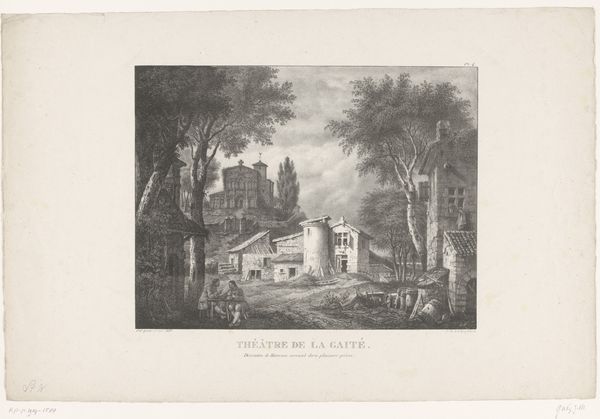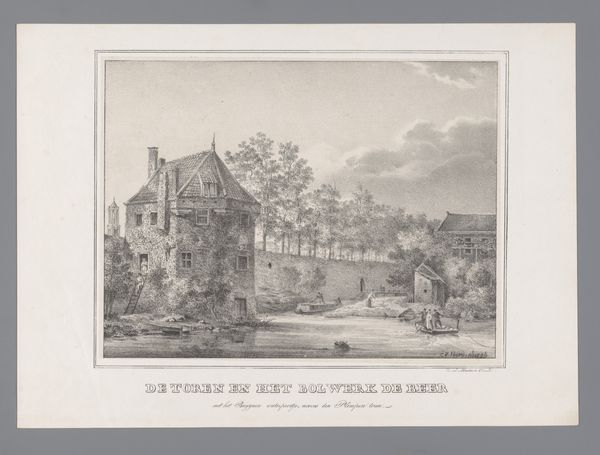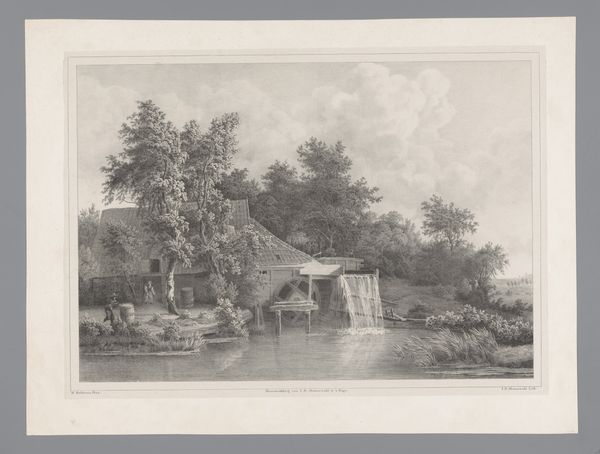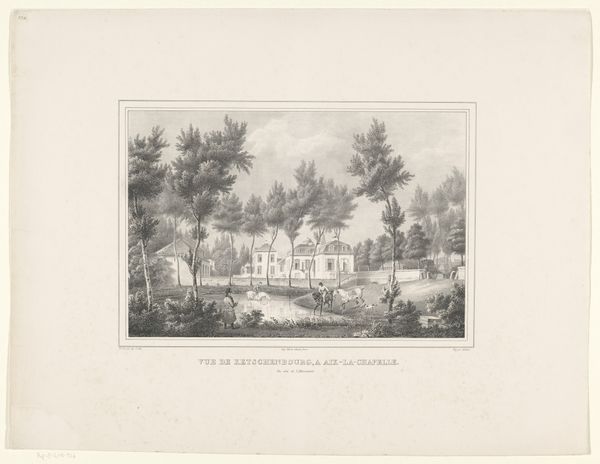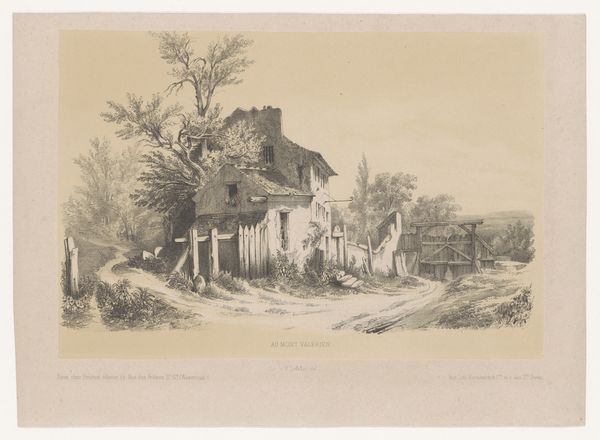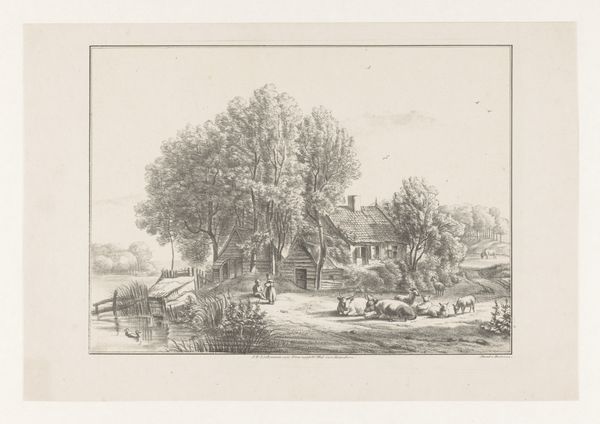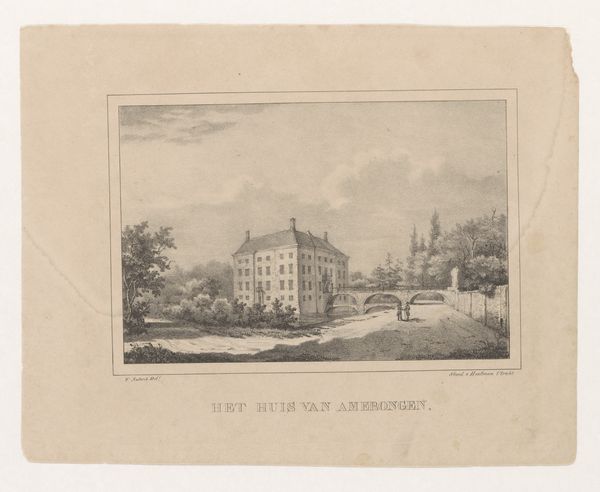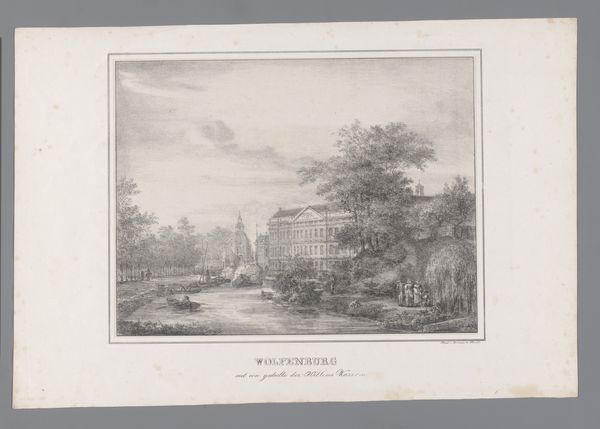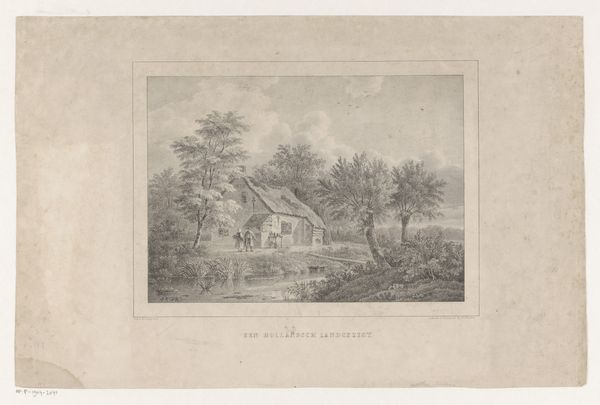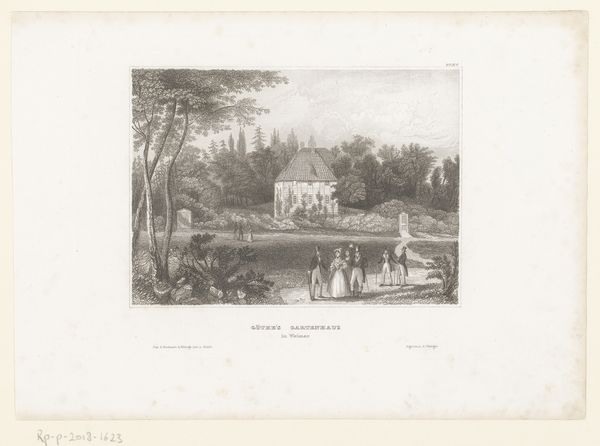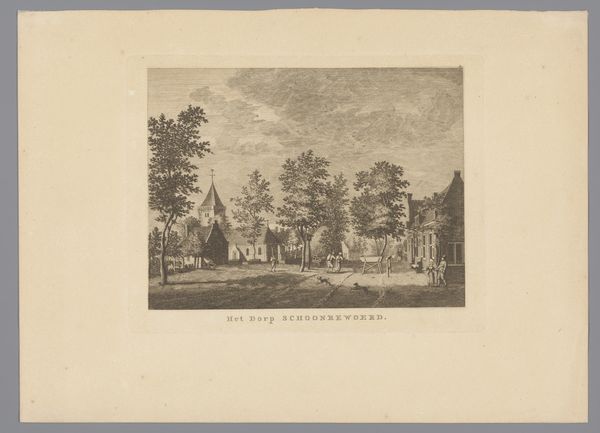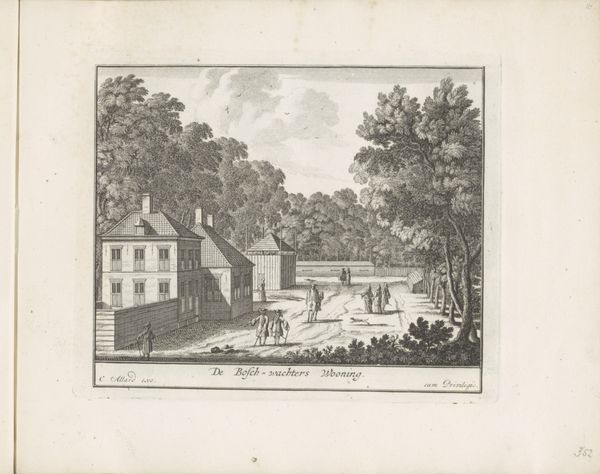
drawing, print, engraving
#
drawing
# print
#
landscape
#
romanticism
#
cityscape
#
engraving
Dimensions: height 280 mm, width 420 mm
Copyright: Rijks Museum: Open Domain
Curator: This is “Stadswal in Utrecht,” an engraving by Cornelis van Hardenbergh, likely created between 1809 and 1843. It’s part of the Rijksmuseum collection. Editor: It feels delicate, almost like a whisper. The tones are soft, the lines incredibly fine, creating this hazy, nostalgic atmosphere. It feels like a memory being gently brought to the surface. Curator: The composition emphasizes a sense of peaceful integration between the built environment and the natural world, reflecting Romantic ideals. The "Stadswal," or city wall, is softened by the presence of trees and water. Note how even the buildings seem to blend into the landscape, creating a harmonious whole. Editor: But consider the labour embedded within that delicate scene! Look at the meticulous, repetitive marks necessary to create those tones with an engraving tool. A skilled artisan, hour after hour, shaping the metal to create this scene for mass consumption through print. The romantic vision of nature here depended on very human manufacture. Curator: And that manufacture creates meaning. Engravings like these offered a sense of shared identity during a time of national formation. Images of cities like Utrecht become symbolic—representing a unified cultural heritage. Think about how accessible these prints were compared to unique oil paintings. Editor: Precisely. These prints are material evidence of expanding capitalist networks. This piece brings Romanticism back down to earth, literally showing how images participate in a larger economy of artistic labour and consumerism. Even "nature" can be packaged and sold. Curator: A potent point. I’m particularly drawn to the subtle interplay between light and shadow, enhancing the quiet grandeur of the scene, subtly encouraging contemplation on the past, perhaps even nostalgia for simpler times. Editor: Well, I’m seeing it anew after delving into the social dimensions of its making. These things were produced by human hand, bought and sold, playing a critical, material role in society beyond any ‘aura’. Curator: I will certainly ponder that relationship further. Thank you. Editor: A worthwhile consideration, I think!
Comments
No comments
Be the first to comment and join the conversation on the ultimate creative platform.
